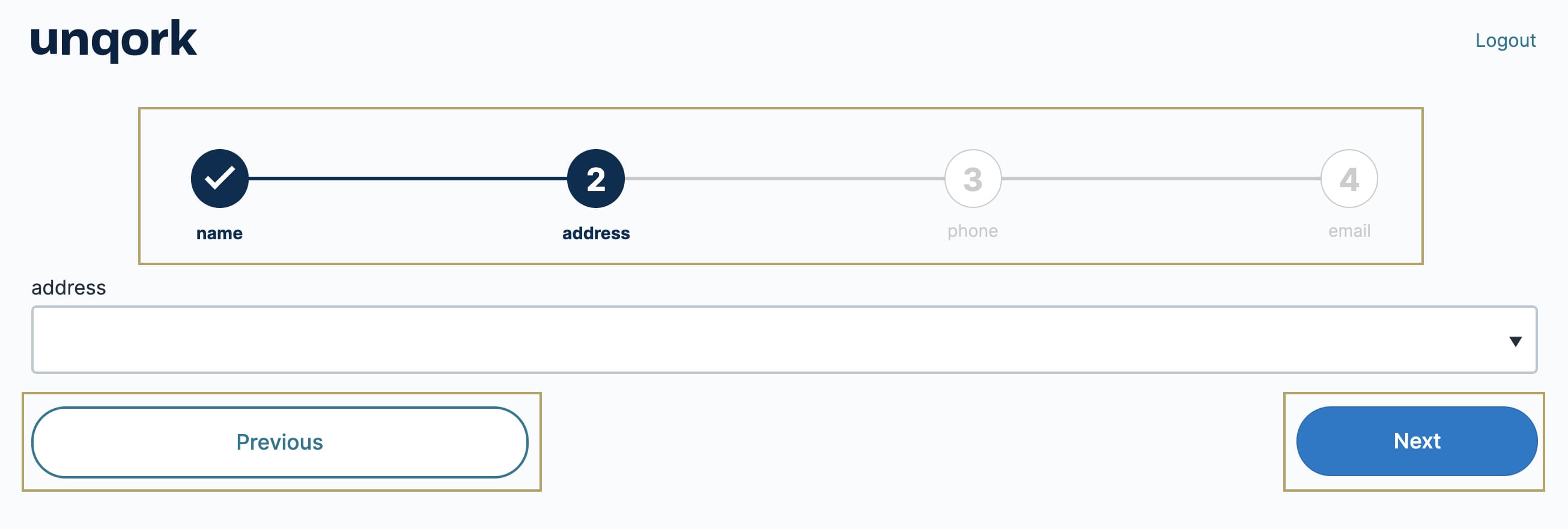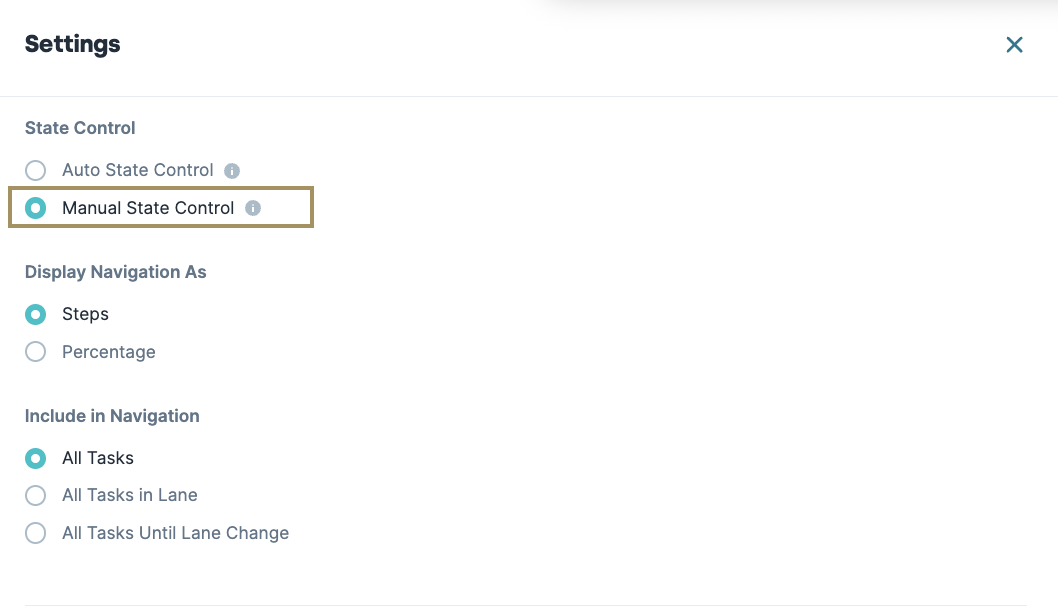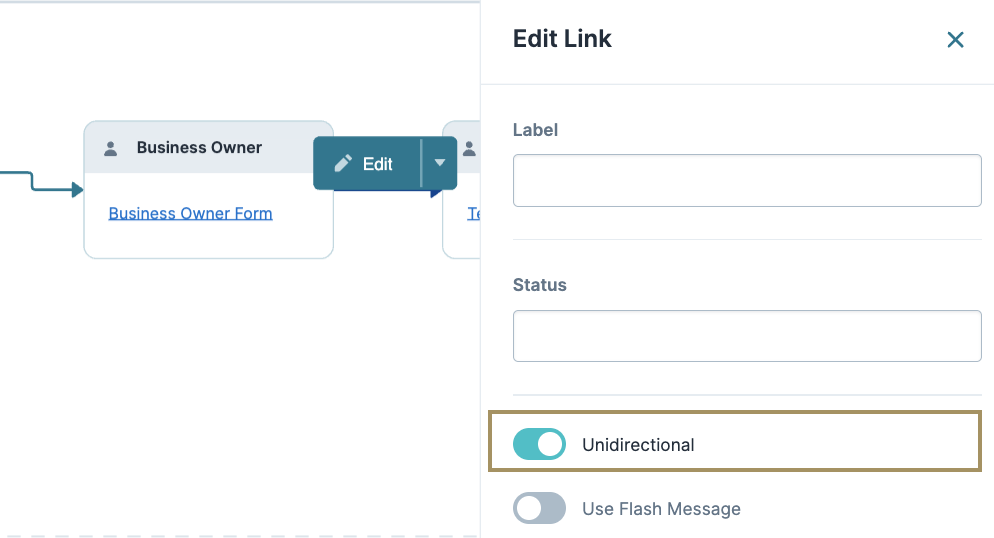Generally speaking, a state refers to the current or last-known status of a process. As an end-user progresses through an application, this state changes. State management is the ability of the system to track and preserve that progress so the user can continue seamlessly.
A simple real-world example is a television. When the TV is turned on, its state is ON. Changing the channel updates the TV’s state. If the TV is turned off and later turned back on, it often remembers the last channel viewed. This ability to restore the previous condition is an example of state management.
The same concept applies to workflows. In a workflow, end-users move through screens in a defined sequence. At times, end-users might navigate away from the application or interrupt their progress. The screen they last visited represents their workflow state. With workflow state management in place, end-users can resume the workflow from where they left off.
Using Sequential Navigation
As you manage your workflow's state, consider how your end-users navigate your application. End-users might access different screens or information in any order. Examples include social media platforms or company websites. But for some applications, a defined order is essential to its purpose. Imagine a dynamic online survey that changes its questions based on end-user input. In this scenario, the order in which the end-user receives the information is important.
Sequential Navigation is when your application directs end-users in a defined order. To build the sequential order, Unqork Workflows support Next and Previous navigation buttons. Workflow also includes a Navigation Panel. This panel displays what process step the end-user is on.
Workflow state management in a sequential application prevents end-users from losing their progress. With Sequential Navigation, your application uses ordered steps or screens that retain information. For example, if an end-user is on the second step of an application and navigates away from the page, they’ll resume on the second step when they return.

Managing State Control
Workflow state management is the process of returning end-users to their last workflow state. But there are different ways to control your workflow state.
To manage state control:
Open your workflow in the Workflow Builder.
At the top right, click the
 (ellipsis) button.
(ellipsis) button.Select Settings.
Auto State Control
By default, workflows are set to Auto State Control. This setting prevents end-users from skipping tasks and requires them to complete each task in a defined, sequential order.
When Auto State Control is enabled, the Make Sequential Navigation Clickable checkbox becomes available. By default, this checkbox is ![]() (unchecked). When left unchecked, end-users must progress through the workflow sequentially using the Next and Previous buttons at the bottom of the page.
(unchecked). When left unchecked, end-users must progress through the workflow sequentially using the Next and Previous buttons at the bottom of the page.
The Make Sequential Navigation Clickable checkbox only displays when in Auto State Control. Selecting the checkbox lets end-users navigate to all previous tasks. They can also navigate to a previous task by clicking it on the page's Navigation Display. They are not required to use the Previous button to move around tasks.
End-users can navigate back to previously completed tasks, but they cannot navigate forward to future tasks. Forward navigation is only available by completing each step sequentially using the Next button.

Manual State Control
To provide your end-users with more navigational freedom, select Manual State Control. With this setting, end-users can access any task where they have permission. Whether moving forward or backward, they can make selections using the Navigation Display. They can also navigate freely to all non-sequential tasks.
This setting gives end-users significant flexibility. For example, they could complete the final task without completing any of the others, complete tasks in a different order, or even choose not to complete certain tasks at all.

Implementing Unidirectional Links
To limit your end-user from visiting previous pages, you can use the Unidirectional Link setting.
To implement unidirectional links:
Click the connection between two Task nodes in your Workflow.
Click Edit.
Set Unidirectional to
.png) (ON).
(ON).

Once your workflow links are unidirectional, end-users cannot revisit steps already completed. Unidirectional links also override all other settings. That includes any settings added in Automatic or Manual State Control.